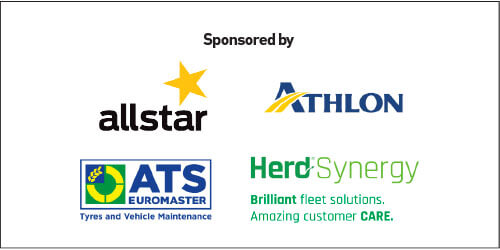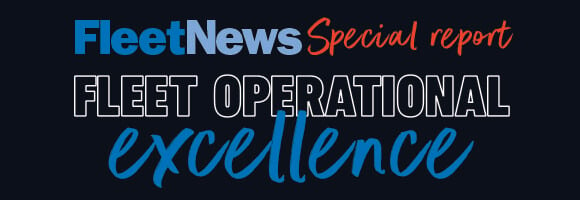This feature was taken from our special Fleet Operational Excellence report

Salary sacrifice (sal/sac) has been one of the big success stories in the leasing sector in recent years, but all too often this is not reflected in the take-up rates of individual schemes.
At a recent Fleet200 Strategy Network event, three fleet decision-makers said their companies, which each had between 500 and 1,200 employees, had between just nine and 11 vehicles ordered through their schemes within the first 12 months.
But there are steps an organisation can take to ensure it maximises take-up.
It is important staff understand how the funding method works: it enables drivers to lease vehicles through their employer and pay for them with their pre-tax income, giving them access to a new vehicle for less money than if they had sourced it privately.
The set monthly payment includes fully comprehensive car insurance, road tax, breakdown cover and maintenance, and, although the employee does not have to pay income tax or national insurance – employers also make NI savings – on the amount sacrificed, they do have to pay benefit-in-kind (BIK) tax on it.
However, as BIK is currently just 2% for battery electric vehicles, it is proving an effective way for employers to give employees access to the zero emission cars.
Determine purpose
A key first step with running a salary sacrifice scheme is for fleets to determine what its purpose is.
The vast majority of schemes are offered as a staff benefit, while there are examples, such as at Willmott Dixon, where the funding method has been used by fleets to replace the company car scheme.
However, Chris Salmon, commercial director at SG Fleet, says this is not necessarily straightforward.
“Understanding that a salary sacrifice scheme is almost never a ‘magic wand’ to fully removing a company car scheme without considerable adjustments is key to ensuring the overall fleet/salary sacrifice/employee operations are optimal,” he adds.
“Schemes are sometimes either sold as this or requested by clients to be dropped in quickly to allow the removal of a company car scheme; often company car schemes and salary sacrifice schemes have different outcomes and this process is not quite as simple as it appears.
“Really understanding this and ensuring expectations are accurately set out and accounted for at the outset is the only way of ensuring this does not cause issues for the company and its employee base.”
SG Fleet has seen an increasing number of clients reduce their perk car eligibility for low business mileage users, and they are looking to salary sacrifice to help those employees rather than simply moving them to a cash allowance.
Manage expectations
Although the fleet decision-makers at the Fleet200 event were disappointed with their take-up, there is no set level an organisation should expect to achieve, says Liam James, head of corporate business development at Novuna Vehicle Solutions.
“It’s all down to the demographic of the employees,” he adds. “You can't get away from the fact that if you work with a retail customer, for example, they might have 10,000 staff and some of them might be on flexible contracts, etc., so your take-up could be restricted to just a certain management population.
“It might be quite small as an overall percentage of the entire population, whereas we've got a lot of legal firms and financial institutions where the uptake can be between 30% and 45%.”
This means it is important that a fleet is realistic about the potential for its individual scheme, he adds.
A sal/sac supplier should be able to provide guidance on this, and this is a key question for an organisation when choosing its scheme provider.
Other factors include considering the profile of any potential supplier, including the experience it has of running salary sacrifice schemes, customer testimonials and its relationships with manufacturers and service providers.
This analysis should also include risk protections, such as early-termination insurance for employees if they leave their organisation during the lifetime of their agreement.
Without any cover, employees could face hefty bills if they have to hand their car back before the end of their contract, but the insurance offered by suppliers differs: some may cover just redundancy, while other circumstances such as long-term sickness or resignation will be omitted.
Organisations should also examine how a scheme provider helps with marketing.
“You start to drive participation through raising awareness,” says James. “The leasing company should make sure it is involved with this.
“We’ve done roadshows, wrapped cars, produced new materials, organised competitions and gone to employee days to promote schemes.”
Online portals
The provision of online driver portals is also important as they allow employees to see what vehicles are available through the scheme, what the cost implications are and find further information through FAQ pages.
The best ones display clear analysis of the gross salary sacrifice, tax deductions and ultimate net salary sacrifice, as well as a comparison of what it would cost to lease the same car privately.
“You can’t just set something up and expect success to happen. It needs the employer to be engaged as well,” adds James.
Decision-makers at the Fleet200 meeting said it was important to share the national insurance savings an organisation makes with participating staff members to prove it is an employee benefit instead of a way for their employer to profit from it.
They cited affordability as a key factor in the low level of take-up they had experienced, with the cost-of-living crisis and rising lease prices of BEVs playing their part.
Lower-earning employees are also unable to take part if the sal/sac arrangement takes their earnings below the national minimum wage.
However, the schemes are becoming more affordable, say salary sacrifice providers.
“There is more affordability coming into the marketplace with the Chinese brands, but also we’re seeing an increase in OEM discounts, mainly driven by the ZEV Mandate,” says James.
“What’s also helpful is there is a bit more availability, you can get cars quickly and that is definitely attractive to customers.”
A number of salary sacrifice providers are also offering used vehicles through their schemes to further lower monthly bills, with SG Fleet saying “the popularity of used vehicles on our schemes has never been higher”.
Boost efficiency, cut costs and improve compliance across all areas of your business with the Fleet News Operational Excellence report.
Delve into crucial topics for effective fleet management, including electrification, digitalisation, alternative funding, and compliance. To give you an edge, we've gathered insights from top industry experts who reveal their best practices and innovative strategies.
Dive into these highlights and read the full report to unlock the secrets of running a more efficient and effective fleet operation.






















Login to comment
Comments
No comments have been made yet.